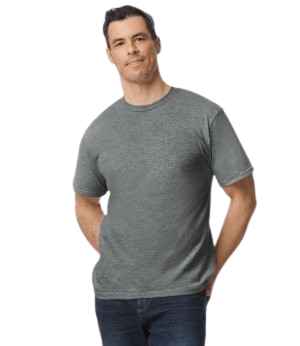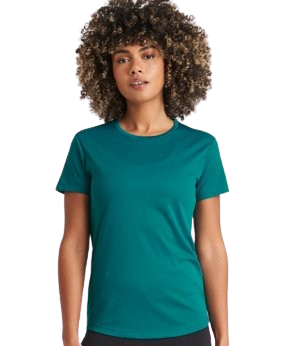T-shirts are an indispensable and multipurpose piece of clothing. They offer comfort, toughness, and a blank canvas for customisation purposes. But wearing a basic T-shirt isn’t always sufficient to keep you warm all year long. Learning how to layer is essential to preserving comfort, style, and functionality. In this blog, you will look at how to dress down workwear t-shirts for various seasons so you may look put together and feel good in any weather.
Get Familiar With the Basics Of Layering
It’s important to know the fundamentals of layering before getting into the details of seasonal layering. Not only is layering important for keeping your movement accessible, but it also involves selecting the right fabrics, making sure you have enough insulation, and piling on layers. These are the essential elements:
Foundational Layer
The layer nearest to your skin is the basal layer. It is in charge of removing moisture from your body to keep you comfortable and dry. This layer should be composed of breathable materials, such as cotton, or moisture-wicking synthetics for custom embroidered t shirts.


Middle Layer
The mid-layer provides insulation. This layer permits moisture to escape while assisting in the retention of heat near your body. As efficient mid-layers, fleece, wool, or insulated jackets are frequently used.
Outer Layer
The outermost layer offers defence against weather-related factors such as wind, rain, and snow. It ought to be robust, windproof, and water-resistant. Windbreakers, raincoats, and work jackets are examples of clothing in this layer.
Springtime Workwear T-Shirt Layering
With its swings in temperature from chilly mornings to balmy afternoons, spring can be erratic. Here’s how to style your working t-shirt for springtime layering that works:
- Base Layer for Morning Chill: Start with a long-sleeved, lightweight work shirt. Choose materials that provide breathability and a hint of warmth, such as blends of cotton and polyester.
- Add a thin hoodie or a light fleece to the mid-layer. This insulates without raising the temperature.
- External Layer: An airy, waterproof jacket is perfect. It will shield you against chilly mornings and unforeseen downpours.
- Accessory ideas: For especially chilly mornings, think about wearing a beanie and light-coloured gloves.
Summertime Workwear T-Shirt Layering
Summertime brings heat and frequently high humidity, so layering needs to change. Remaining calm, dry, and sun-protected is the aim.
- Beat the Heat Base Layer: It’s essential to wear a moisture-wicking, short-sleeved or sleeveless working t-shirt. Seek for materials that wick away sweat from the body, such as performance textiles or blends of polyester.
- Mid-Layer: During the summer, you can skip the middle layer of clothing, or you can wear a lightweight, breathable button-up shirt over the T-shirt if you work in an air-conditioned workplace.
- Outside Layer: It’s critical to shield yourself from the sun. To protect your skin from damaging rays, wear a UV-protective shirt or a lightweight, long-sleeve work shirt over your t-shirt.
- Accessory: To protect your face and neck, remember to wear a cap or hat with a wide brim. Further sun protection can also be obtained by wearing sunglasses and a neck gaiter.
Autumn Workwear T-Shirt Layering
Perfect Autumn weather is defined by pleasant afternoons and chilly mornings and evenings. Your ability to layer well will help you adjust to these shifting circumstances.
- Base Layer for Morning and Evening Coolness: A long-sleeve work shirt composed of a cotton-polyester blend offers a cosy and absorbent base.
- Mid Layer: During the colder hours of the day, a fleece pullover or flannel shirt might provide the essential warmth.
- Outer Layer: To be warm without being overly cumbersome, use a mid-weight jacket, like a softshell or a quilted jacket.
- Accessory items: In the morning and evening, beanies, light-coloured gloves, and scarves can add extra warmth.
Winter Workwear T-Shirt Layering
For protection against the cold, wind, and potentially snow, winter calls for heavier layering. It’s essential to stay mobile and warm.
- First Layer: Starting with a thermal long-sleeve workwear t-shirt, combat the cold base layer. The best materials are those with merino wool or synthetic blends that are made to be both moisture-wicking and insulating.
- Mid Layer: To ensure necessary warmth, wear an insulated vest or a heavy-duty fleece jacket. You may even layer both, depending on how bad the cold is.
- External Layer: It is essential to have a sturdy, insulated work jacket that is impervious to water and air. For increased durability, look for features like adjustable hoods, several pockets, and reinforced places.
The Benefits of Layering Workwear T-Shirts
In addition to being a sensible way to deal with changing weather, layering workwear screen printing t-shirts has many other advantages that improve comfort, efficiency, and general job performance. The following justifies the wisdom of stacking workwear t-shirts:



Flexibility in Response to Varying Weather
- Versatility
Layering gives you the flexibility to adjust to changing temperatures during the day. As the weather changes, you can effortlessly add or remove layers to stay as comfortable as possible.
- Year-Round Utilisation
You may wear your working t-shirts throughout the year with the appropriate layering technique. You can wear them with various layers to easily transition from hot summer days to the chilly winter months.
Improved Comfort
- Helps In Moisture Control
The base layer—typically a t-shirt—is essential for controlling moisture. Fabrics that wick away moisture assist in keeping sweat off your skin, minimising irritation and chafing risk.
- Regulate Temperature
Better temperature regulation is achieved by layering. Wearing many layers helps you stay warm in cooler weather by trapping heat. You can shed layers in warmer weather to keep cool.
More Output
- Continuous Workflow
You can quickly adjust to changes in the environment without stopping your work if you dress in layers—less downtime and increased continuous productivity result from this.
- Concentrating on the task.
You can concentrate more effectively on the subject at hand when you’re at ease. By dressing appropriately, you may be comfortable and focus on your task without being sidetracked by the weather.
Protection From Different Weather Elements
- Weather Protection
Using layers protects against different types of weather. Your outer layer protects you from wind, rain, and snow, and your mid-layer provides insulation.
- Protection From Sun
Sunburn risk can be decreased in the summer by wearing lightweight, long-sleeve shirts over t-shirts to shield your skin from damaging UV radiation.
Maintaining a Professional Image
- Consistency
Maintaining a consistent and businesslike appearance can be aided by layering. As the foundation, custom-printed t-shirts may guarantee that your squad has a unified, branded appearance.
- Clear Appearance
Layering enables you to seem put together even in changing weather conditions. You can remove exterior layers without appearing untidy.
More Functionality and Safety
- Visibility
Wearing high-visibility vests or jackets over t-shirts can increase safety in hazardous work conditions. It is simple to add or remove these layers as needed.
- Useful Elements
Workwear becomes more valuable with the addition of practical features like pockets, reinforced sections, and adjustable elements found in the outer and mid-layers.
Cost-Effectiveness
- Longer Garment Life
Adding layers to your clothes can make them last longer. Wearing several layers helps to preserve the foundation t-shirt by distributing wear and tear evenly over the outer layers.
- Less Clothing Is Needed
You can mix and match layers to avoid buying separate outfits for each season. As a result, you won’t need as large of a wardrobe, saving you money.


Practical Hints for Stacking Workwear T-Shirts
- Know Your Workplace
Knowing your workspace is essential for proficient personalised work clothing layering. Less clothing is needed for indoor jobs in climate-controlled environments, but more flexible clothing is required for outside work in variable weather.
- Remain Adaptable
Select layers that are simple to add or remove. Adjustable features such as buttons, zippers, and features on mid-layers and coats can help you control your body temperature throughout the day.
- Put Comfort First
Make sure that there is a complete range of motion for every layer. Layers that are too tight or constrictive can hurt and impair your performance.
- Put Investment Into Quality
In the long run, high-quality materials will offer better performance, durability, and comfort even though they may cost more upfront.
- Customise Your Workwear
For branding and customisation, think about getting t-shirts custom printed. They not only provide a helpful foundation, but they also strengthen the brand of your business. Customised clothing is your go-to option if you want to have high-quality customisation on your apparel.
Conclusion
Workwear t-shirt layering is a valuable tactic with several advantages. It is both practical and effective. Layering offers a flexible solution for workwear, such as custom embroidered t shirts, from comfort and comfort enhancement to productivity and safety assurance and weather adaptation. Understanding and putting into practice the layering principles can help you make the most out of your workwear for every season and maintain your comfort, style, and productivity all year round.


